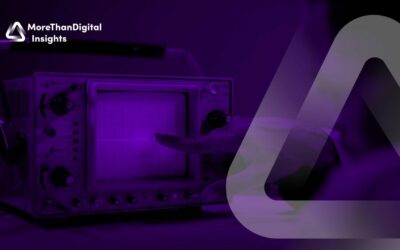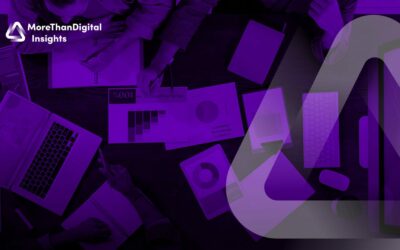In today’s world, businesses need to have a deep understanding of the data surrounding their company and operations. This is where business analytics comes in. Business analytics is the process of gathering, analyzing, and interpreting data to make better business decisions. It can help you understand everything from who your customers are to how much profit you’re making on specific products. This can include using data to improve customer experience, marketing strategies, product development, etc. Business analytics has become an essential tool for businesses of all sizes and the basis for Data-Driven Strategic Management (DDSM).
But having insights into your data is only one part of the equation. You also need to be able to use that data to drive management and decision-making within your company. That’s where data-driven management comes in. Data-driven management is the practice of making decisions based on actual data rather than intuition or guesswork. When done correctly, it can lead to more efficient operations, better customer service, and increased profits.
What is Business Analytics?
Business analytics is the process of converting data into insights that can be used to make better business decisions. It involves using a variety of analytical techniques to examine data, identify patterns and trends, and then recommend actions based on that analysis.
Business analytics can be used in a variety of ways, depending on the needs of the organization. It can be used to improve decision-making, optimize operations, understand customer behavior, assess competitive threats, and more.
There are many different tools and techniques involved in business analytics, and the specific approach that is used depends on the needs of the business. Some common methods include data mining, predictive modeling, and market segmentation.
Differentiation of Business Analytics
Business Analytics vs. Data Analytics
Data analytics is the process of analyzing data to find useful information. This can be done for a business, but it can also be done for other purposes like scientific research or tracking football games. Business analytics is a type of data analytics that is specifically used to help businesses make better decisions. It uses data to figure out things like what products people are more likely to buy, how much money a company should spend on marketing, or what changes need to be made to a product or service to make it more popular.
Business Analytics vs. Data Science
The line between business analytics and data science is blurry. Many people use them interchangeably. However, there are some key differences.
Data science is more focused on understanding the “why” behind data. Business analytics is more focused on what to do with data to make decisions that will help a business be more successful. Data science also tends to use more sophisticated methods to analyze data, like machine learning and artificial intelligence. Business analytics is more likely to use methods like regression analysis and decision trees.
However, there are a lot of similarities between business analytics and data science. They both use data to improve decision-making. They both use statistics and modeling to understand data. And they both rely on software tools to help them analyze data.
Business Analytics vs. Business Intelligence
The terms “business analytics” and “business intelligence” are often used interchangeably, but there are some key differences between the two. Business analytics (BA) is the process of analyzing data to understand and improve business performance, make predictions and future scenatios. This can include analyzing past performance to gain insights into what has worked and what has not, as well as forecasting future performance based on current trends. Business intelligence (BI), on the other hand, is the process of gathering, organizing, and analyzing data to make better business decisions. This includes using data to identify opportunities and threats, as well as to assess performance and make decisions about future courses of action.
There are some similarities between business analytics and business intelligence. Both involve the use of data to improve business performance, and both can be used to make better decisions about the future of a company. However, there are also some key differences. Business analytics tends to focus more on past performance and predicting future outcomes, while business intelligence focuses more on identifying opportunities and threats currently faced by a company. Business analytics is also more focused on data analysis, while business intelligence may also include reporting, data mining, and decision support.
Read more: Business Intelligence (BI) vs Business Analytics (BA) – Understanding the Difference
3 Types of Business Analytics
Business analytics has three different types: descriptive, prescriptive, and predictive.
Descriptive Business Analytics
Descriptive business analytics is a way of understanding what has already happened in your business. It can help you understand past performance, identify trends, and diagnose issues. With descriptive analytics, you can answer questions like:
- What sales patterns have emerged?
- What products are selling the best?
- Which marketing campaigns are most effective?
- What are the most common customer complaints?
Prescriptive Business Analytics
Prescriptive analytics goes beyond simply describing what has happened; it also guides what actions should be taken to improve results. Using prescriptive analytics, you can answer questions like:
- What should we produce next?
- How can we increase sales by 10%?
- What’s the best way to allocate our marketing budget?
Predictive Business Analytics
Predictive business analytics uses past data to make predictions about future events. It can be used to anticipate problems, plan for contingencies, and even make decisions about what actions to take. Predictive analytics can answer questions like:
- What are the chances that we will go bankrupt in the next year?
- How likely is it that we will experience a supply chain disruption?
- What is the likelihood that a particular customer will churn?
Elements of Business Analytics
Business analytics has several elements and involves many concepts on how to acquire, organize, analyze and interpret data, which we will explain now.
Data Aggregation
Data aggregation is the process of collecting data from various sources and bringing them together into a single repository. This is an important first step in business analytics, as it allows you to collect data from all areas of your business and create a comprehensive view of performance. With all the data in one place, you can then begin to analyze it and find trends and patterns that can help you make better decisions about how to run your business.
Text Mining
Text mining is the process of extracting information from text data. This can be done manually but is often done using software that can automatically extract the relevant information. Text mining can be used to extract data about customers, competitors, products, and other aspects of the business.
Data Cleaning
Data cleaning is the process of removing or correcting inaccuracies in data. This is an important step in business analytics, as it ensures that the data is accurate and reliable. Data cleaning can be done manually but is often done using software that can automatically correct or remove inaccuracies.
Data Organization
One of the key elements of business analytics is data organization. This involves organizing the data so that it is easy to access and analyze. By organizing the data, you can make it easier to find trends and patterns and make decisions based on the data.
There are many ways to organize data, and the best way to do it will vary depending on the type of data and the needs of the business. Some common methods of data organization include:
- Tables
- Charts
- Graphs
- Pivot tables
- Data warehouses
By using the right method of data organization, you can make it easier for everyone in the business to access and use the data.
Data Mining
Data mining is the process of extracting valuable insights from large data sets. This can be done by identifying patterns and trends in the data and then interpreting these findings to help you make better decisions about how to run your business.
Data mining is a more specific type of data analysis that is used to extract valuable insights from large data sets. This can be done by identifying patterns and trends in the data and then interpreting these findings to help you make better decisions about how to run your business.
Association and Sequence Identification
Association and sequence identification are two methods that can be used to find relationships in data. Association is the process of identifying relationships between items in a data set. This can be done by looking for patterns in the data and then using these patterns to identify relationships between items.
Sequence identification is the process of identifying relationships between items over time. This can be done by looking for patterns in the data over time and then using these patterns to identify relationships between items.
Forecasting
Forecasting is the process of predicting future events based on past data. This can be done by using historical data to develop models that predict future events. Forecasting can be used to predict things such as sales, customer behavior, and other aspects of the business.
Forecasting is a type of predictive analytics, which is the process of using past data to predict future events. Predictive analytics can be used to predict things such as sales, customer behavior, and other aspects of the business.
The main difference between forecasting and predictive analytics is that forecasting uses historical data to develop models that predict future events, while predictive analytics uses past data to predict future events.
Predictive analytics
Predictive analytics is a type of forecasting that uses data mining and machine learning to make predictions. Predictive analytics can be used to predict anything from customer behavior to stock prices to disease outbreaks.
Optimization
Optimization is the process of making decisions that minimize or maximize a certain goal. This can be done by finding the best solution to a problem or by finding the best way to achieve a certain goal.
There are many different types of optimization, and the best way to optimize something will vary depending on the situation. Some common methods of optimization include:
- Mathematical optimization
- Algorithmic optimization
- Operations research
- Statistical optimization
Each of these methods has its strengths and weaknesses, and the best method of optimization will vary depending on the situation.
Data Visualization
Data visualization is the process of presenting data in a visual format. This can be done by using graphs, charts, and other methods to present data in a way that is easy to understand.
Data visualization can be used to present data in a variety of ways, including:
- Bar graphs
- Line graphs
- Pie charts
- Scatter plots
- Dot plots
- Bubble charts
Each of these types of graphs has its strengths and weaknesses, and the best type of graph will vary depending on the situation.
Conclusion
Business analytics is an important field that can help companies make data-driven decisions and create data-driven strategies. Data mining, forecasting, predictive analytics, and optimization are all methods of business analytics that can be used to improve decision-making in the company. With the right data visualization, it is even possible to give every employee and manager the information they need to do their jobs more effectively. All of these together can help create a data-driven culture in which decisions are made based on evidence and data rather than intuition and gut feeling.
Overall it is safe to say that by using business analytics, companies can make better decisions about how to run their businesses and achieve their goals.
About MoreThanDigital Insights
MoreThanDigital Insights is a business analytics platform that helps companies make data-driven decisions based on a holistic and neutral assessment. The platform is free and easy to use, and it provides a variety of tools to help businesses make data-driven decisions from financial analysis up until business maturity. MoreThanDigital Insight is an important tool for businesses that want to make data-driven decisions and create data-driven strategies.






